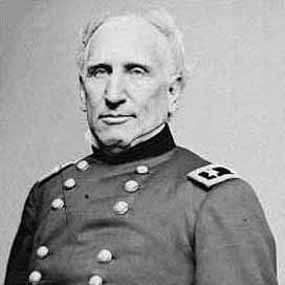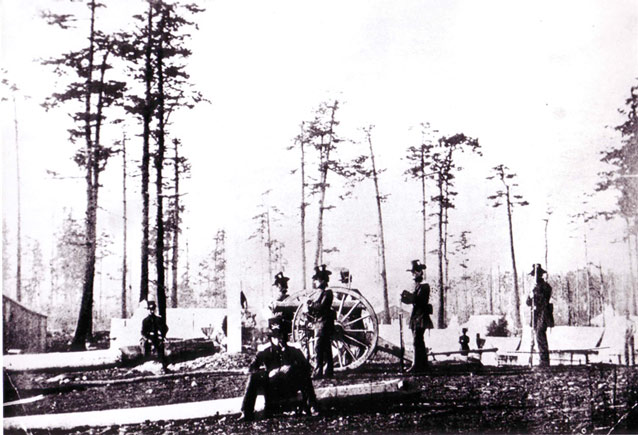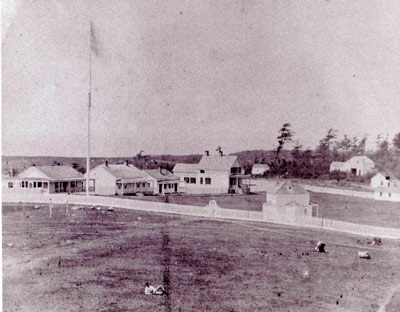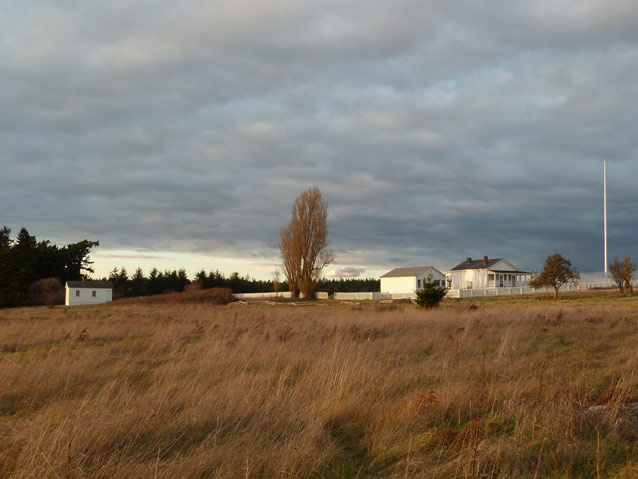Profile in Preservation

NPS
QUICK FACTS
Profession: United States Army Officer
Education: West Point
Place of Birth: East Greenwich, Rhode Island
Date of Birth: July 12, 1807
Place of Death: Brooklyn, New York
Date of Death: January 22, 1882
Associated Landscape:
American Camp, San Juan Island National Historical Park
Association with Landscape: Commander of Camp
BIOGRAPHICAL SKETCH
Silas Casey was born July 12, 1807 in East Greenwich, Rhode Island. After graduating near the bottom of his class at West Point, he served in the Seminole War. Later, in the Mexican-American War, he was severely wounded and cited for bravery in the assault on Chapultepec Castle. Casey was promoted to lieutenant colonel and named deputy commander of the Ninth Infantry Regiment when the unit was reformed in 1855. When the unit arrived in Washington Territory, eight companies went east of the Cascades, while Casey took two companies with him to Fort Steilacoom from January 1856 to August 1861.

NPS/San Juan Island National Historical Park archives
It was with combined units of the Ninth and Fourth Infantry and Third Artillery regiments that Casey went to San Juan Island to reinforce George Pickett's Company D, Ninth Infantry. When Casey arrived in August of 1859 he found Pickett encamped on an exposed location just above today's South Beach. After spending two stormy nights at Pickett’s camp, Casey ordered his forces to relocate to the north slope of the ridge, just north of the Hudson’s Bay Company barns. Casey ordered large, conical Sibley tents shipped from Fort Steilacoom to the new site, which Casey deemed "a very good position for an entrenched camp." The tents would supplement the clapboard buildings Pickett had already shipped over from Fort Bellingham.

Photo Courtesy of BC Provincial Archives, #15273, from NPS American Camp Cultural Landscape Inventory report
Casey brought calm and common sense to the standoff with British forces and remained in command on the island until a stand down was arranged between British Gov. James Douglas and U.S. Army commander, Lt. Gen. Winfield Scott.
Casey was promoted to brigadier general shortly after arriving on the East Coast in 1861. His sole field service during the Civil War was in the Peninsula campaign, where his division was thrashed at Seven Pines on May 31, 1862; ironically enough, they were facing George Pickett's brigade.
He was still promoted to major general, given a desk, and from it wrote his three-volume System of Infantry Tactics, used by both sides during the war. He remained in the army on active duty after the war, reverting to his regular army rank of colonel. He retired in 1868 after more than 40 years of active service and died in 1882.
LANDSCAPE SKETCH

NPS
The American Camp cultural landscape is located in the southeast corner of San Juan Island within the San Juan Island National Historical Park. The site is significant as the location of a United States Army camp during the joint occupation of the island by British and American Troops from 1859 to 1874.
The cultural landscape also includes the sites of the Hudson’s Bay Company agricultural outpost, Bellevue Farm, and San Juan Town. The site occupies a portion of the southeast peninsula of San Juan Island and is comprised of a broad ridge overlooking Griffin Bay to the north and Haro Strait to the south, surrounding scrub‑prairie land, and Puget Sound shoreline. American Camp features significant historic resources, including an earthwork (or redoubt), two of the original military buildings, the reconstructed military fence and flagpole, and numerous archeological sites.
Last updated: November 8, 2016
